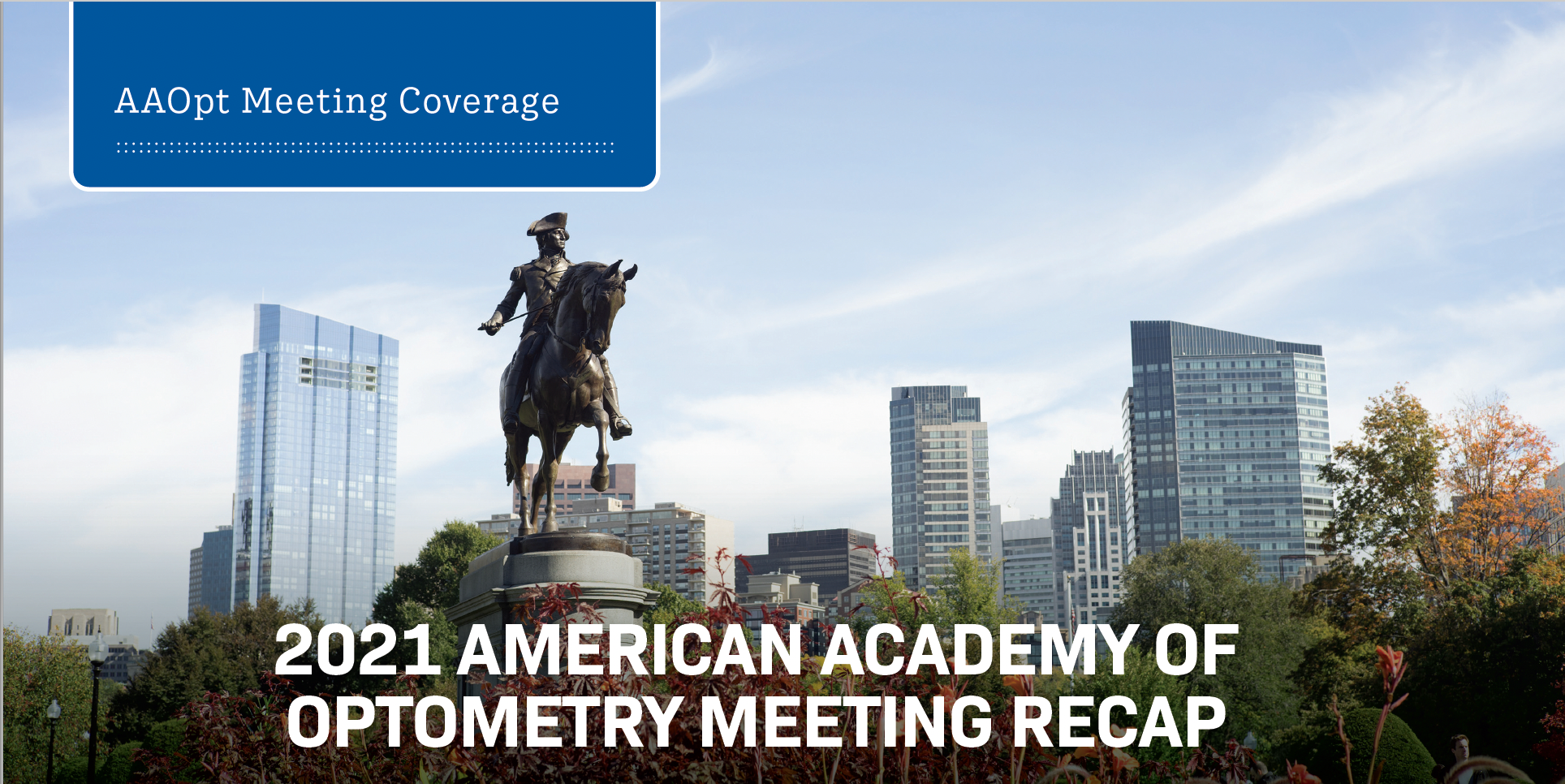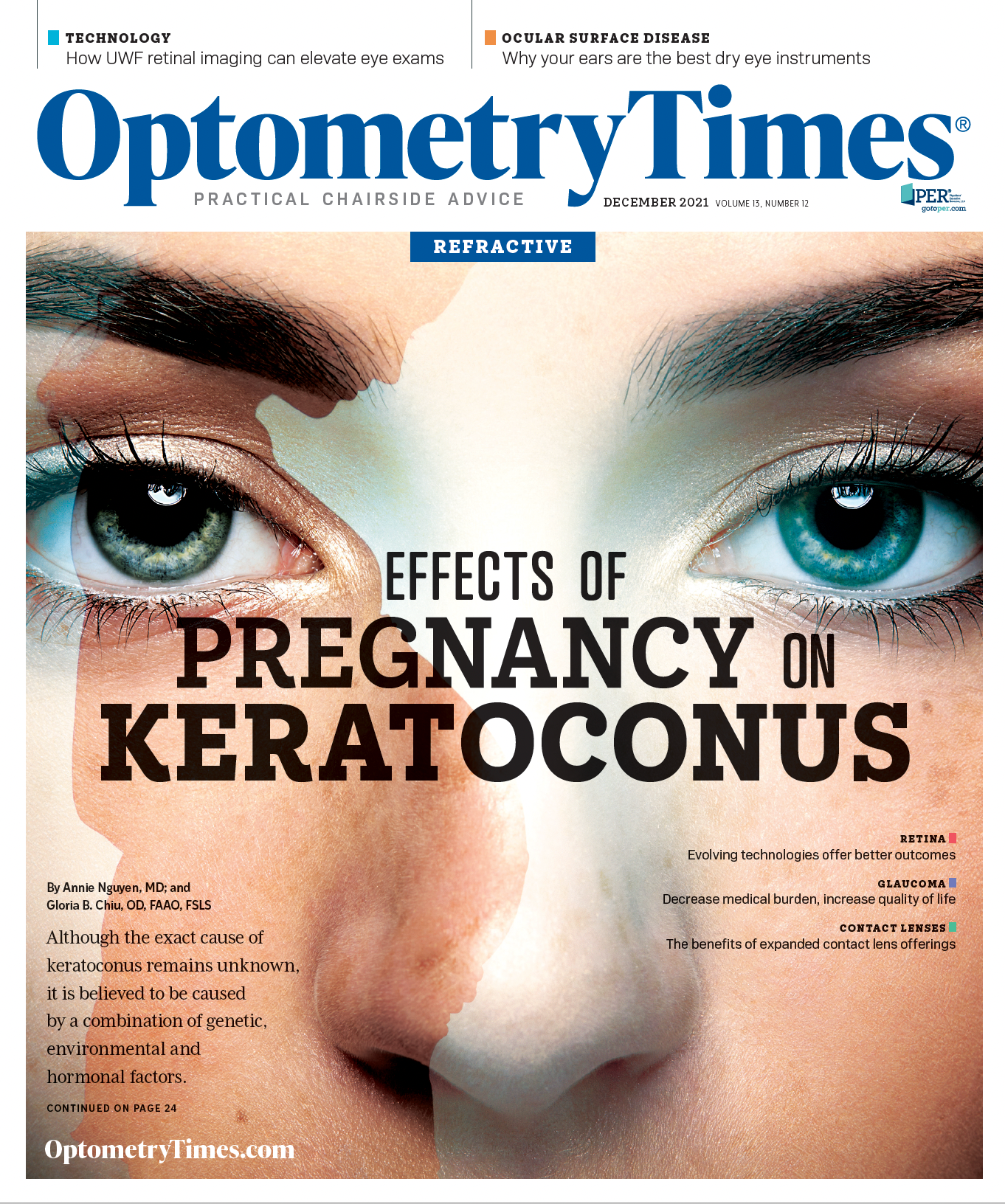2021 American Academy of Optometry meeting recap
In-person event inspires excellence in eye care

The American Academy of Optometry (AAO) 2021 annual meeting, the profession’s largest conference of the year, took place November 3 to 6, at the Boston Convention and Exhibition Center.
Some 8000 attendees and 200 different companies gathered at this year’s event to reconnect with colleagues and participate in more than 300 hours of educational opportunities. Up to 32 continuing education credits were available through lectures and workshops and section and special interest group symposia; hundreds of scientific paper and poster presentations were also offered.
In-person attendance required adherence to thorough COVID-19 safety protocols outlined by the AAO and the state of Massachusetts. All attendees were required to complete a form attesting to compliance with protocols before registering for the meeting.
For all those who were unable to make the event, a Best of Academy 2021 Boston virtual meeting is scheduled for December 3 to 5. It will provide attendees with 20 hours of online continuing education opportunities.
Meeting highlights
Is cultural competency an optometric skill?
As the demographics of the US population rapidly change, many optometrists are experiencing an increase in racially or ethnically discordant patient encounters. This is due, in part, to the significant racial and ethnic disparities in health and visual outcomes in the United States.
Matthew G. Pearce, OD, DrPH, MPH, FAAO, examines how cultural competency and racial disparities affect health and visual outcomes and encourages ODs to consider how their own culture influences their patient interactions.
The benefits of COVID-19 vaccine on mental health
A positive and likely overlooked benefit of receiving a COVID-19 vaccination, according to investigators from the Illinois College of Optometry in Chicago, is the association between vaccination and a lower rate of stress. Connor Robbs and Yi Pang, OD, PhD, FAAO, highlight a study focusing on a link between COVID-19 vaccinations and a lower rate of stress in ophthalmic personnel and students.
Eye injuries outside the workplace: the OD’s important role and legal responsibilities
Mark Rosenfield, PhD, MCOptom, FAAO, and Georgina Tsakrios, JD, review common causes of eye injuries outside the workplace. Given the high incidence of often preventable ocular impairments, sometimes leading to blindness or vision loss, they stress the importance of advising patients on eye safety and present several case examples. The optometrist plays an important role and holds legal responsibilities.
Effect of COVID-19 on vision correction habits
Erin Rueff, OD, PhD, FAAO, and Elaine Chen, OD, FAAO, detail how habits surrounding spectacle use and contact lens wear changed during the COVID-19 pandemic among the faculty, staff, and student population of Marshall B. Ketchum University. With the increase in screen time during the pandemic, the use of spectacles increased overall whereas the use of contact lenses decreased in association with concomitant lifestyle changes.
Use of Upneeq for ocular pathologies offers more than meets the eye
Kamila Mikos, OD, and Harriette Canellos, OD, FAAO, explain how oxymetazoline hydrochloride is not just for treating acquired blepharoptosis. It also can be used for ocular pathologies that cause blepharoptosis.
Tackling RP from all angles: from diagnosis to bionics
Micaela Gobeille, OD, MS, FAAO, discusses keys to the successful management of retinitis pigmentosa (RP), including diagnosing and monitoring. Additionally, she reviews clinical trials on the horizon and pipeline therapies.
Bariatric surgery may be linked to changes in corneal sensitivity
Stuti Misra, PhD, B Optom, offers insight into her research, which showed that bariatric surgery may result in more benefits than weight loss alone for patients. Investigators in New Zealand also observed a reduction in the corneal sensitivity threshold, suggesting a marked improvement in corneal sensitivity.
Genetic testing: simplifying the diagnoses of inherited retinal diseases
Sherry Bass, OD, FAAO, describes the circuitous path that clinicians have had to negotiate to establish a diagnosis in patients with inherited retinal diseases (IRDs). She discusses how that path has become more straightforward, providing examples of how genetic testing can help in the diagnosis of IRDs in tricky cases.
Reports define magnitude of vision loss, focus on access to eye care
Sandra Block, OD, MEd, MPH, FAAO, discusses movements that have identified the scope of visual impairment worldwide. According to Block, eye health will be recognized as a global development issue and there will be a push for countries to link eye health to other developmental programs.

Newsletter
Want more insights like this? Subscribe to Optometry Times and get clinical pearls and practice tips delivered straight to your inbox.